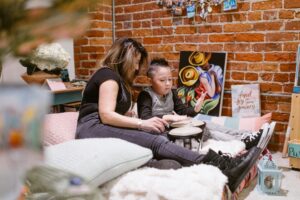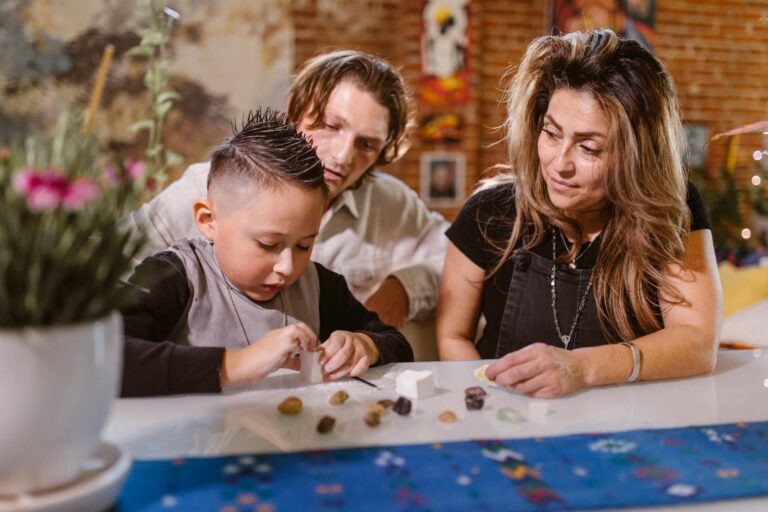How to Get Started Homeschooling Your Child with Autism
I’m going to dive into a topic that’s incredibly close to my heart—how you can get started homeschooling your child with autism. Whether you’re considering this path for the first time or are already on your homeschooling journey and looking for ways to improve, I’m here to guide you every step of the way.
By the end of this post, you’ll have a clear roadmap, actionable tips, and the confidence to create a learning environment tailored to your child’s unique needs.

Why Homeschooling May Be the Best Option for Your Child
First, let’s talk about why homeschooling can be an excellent choice for children with autism. Traditional school settings often lack the flexibility and individualized attention that many autistic children need to thrive. Homeschooling allows you to:
- Customize the curriculum to match your child’s strengths and interests.
- Create a sensory-friendly environment.
- Build a schedule that works with your child’s natural rhythms.
Studies have shown that children with autism often excel when given the opportunity to learn at their own pace. And as a parent, you’re uniquely positioned to provide that nurturing, one-on-one support.

Legal Requirements and Getting Started
Now, before you jump in, it’s crucial to understand the legal requirements for homeschooling in your area. Every country—and even every state—has its own set of rules. Here’s what you need to do:
- Research your local homeschooling laws.
- File any necessary paperwork, such as a notice of intent to homeschool.
- Keep records of your child’s progress, as some regions require periodic assessments.
Once you’ve handled the legalities, it’s time to start planning your homeschooling journey.

Creating a Personalized Curriculum
One of the most exciting aspects of homeschooling is the ability to design a curriculum tailored to your child’s needs. Here’s how to get started:
- Assess your child’s strengths and challenges: Use tools like developmental assessments or simply observe their interests.
- Incorporate therapies into your routine: Speech therapy, occupational therapy, and social skills training can all be woven into your daily schedule.
- Use a mix of resources: Combine workbooks, online programs, and hands-on activities to keep learning engaging and fun.
Remember, flexibility is key. If something isn’t working, don’t be afraid to pivot and try a new approach.

Setting Up a Learning Environment
Creating a dedicated learning space can make a world of difference. Here are some tips:
- Choose a quiet, clutter-free area in your home.
- Include sensory tools like fidget toys, noise-canceling headphones, or a weighted blanket.
- Keep materials organized and easily accessible.
This space doesn’t have to be perfect—it just needs to be a place where your child feels comfortable and ready to learn.

Building a Daily Routine
Children with autism often thrive on routine, so having a consistent daily schedule is essential. Here’s a sample routine to get you started:
- Morning: Start with a calming activity, followed by core subjects like math and reading.
- Midday: Take a sensory break or go outside for physical activity.
- Afternoon: Focus on creative activities like art, music, or science experiments.
Incorporate plenty of breaks and be mindful of your child’s energy levels throughout the day.

Socialization and Community Support
One common concern for homeschooling parents is socialization. The good news is, there are plenty of ways to help your child build social skills:
- Join local homeschooling groups or co-ops.
- Participate in extracurricular activities like sports or art classes.
- Arrange playdates with other families.
Building a support network for yourself is just as important. Connect with other homeschooling parents to share resources and advice.

Overcoming Challenges and Staying Motivated
Homeschooling a child with autism isn’t without its challenges. There will be tough days, but remember—you’re not alone. Celebrate small victories, take care of yourself, and don’t hesitate to seek professional help if needed.
Most importantly, trust your instincts. You know your child better than anyone else, and your dedication will make all the difference in their education and overall well-being.
Homeschooling your child with autism is a journey filled with opportunities for growth, connection, and joy.
If you found this post helpful share it with other parents who might benefit. And don’t forget to leave a comment below—I’d love to hear about your experiences and answer any questions you have. Until next time, take care and happy homeschooling!




